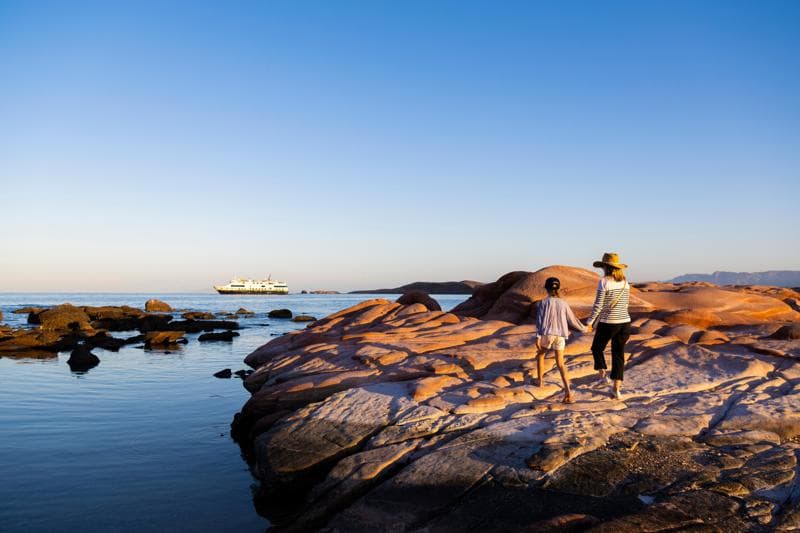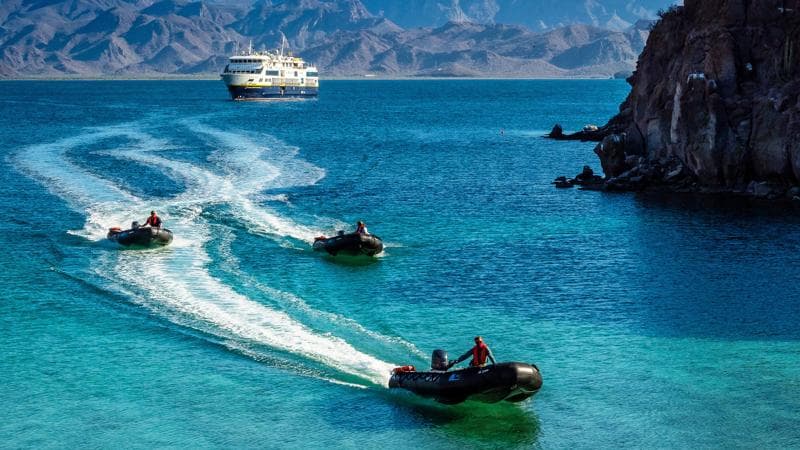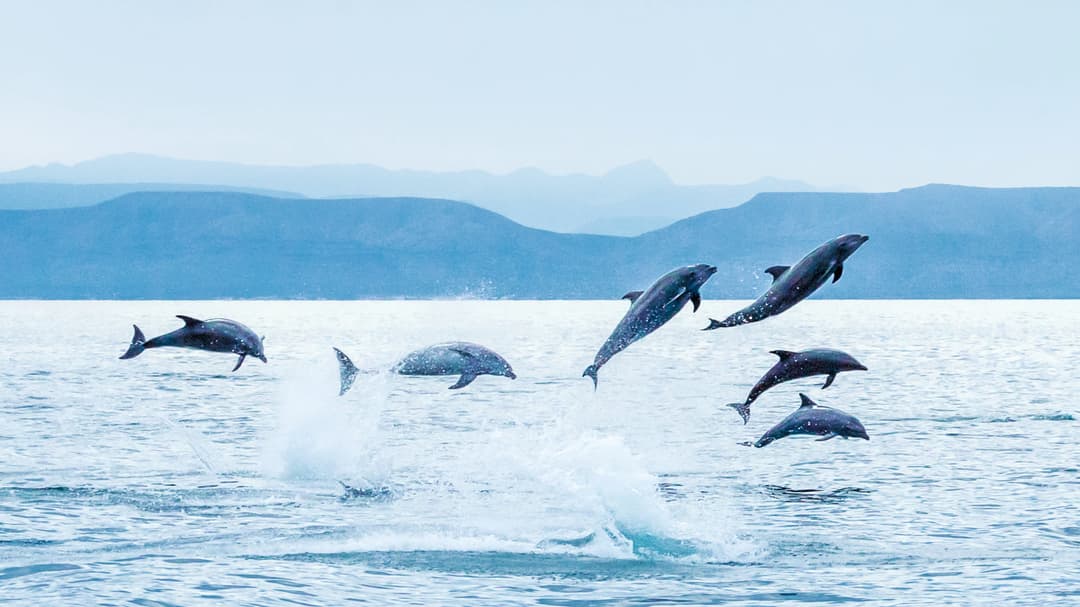8 Reasons to Experience Baja California with National Geographic-Lindblad Expeditions
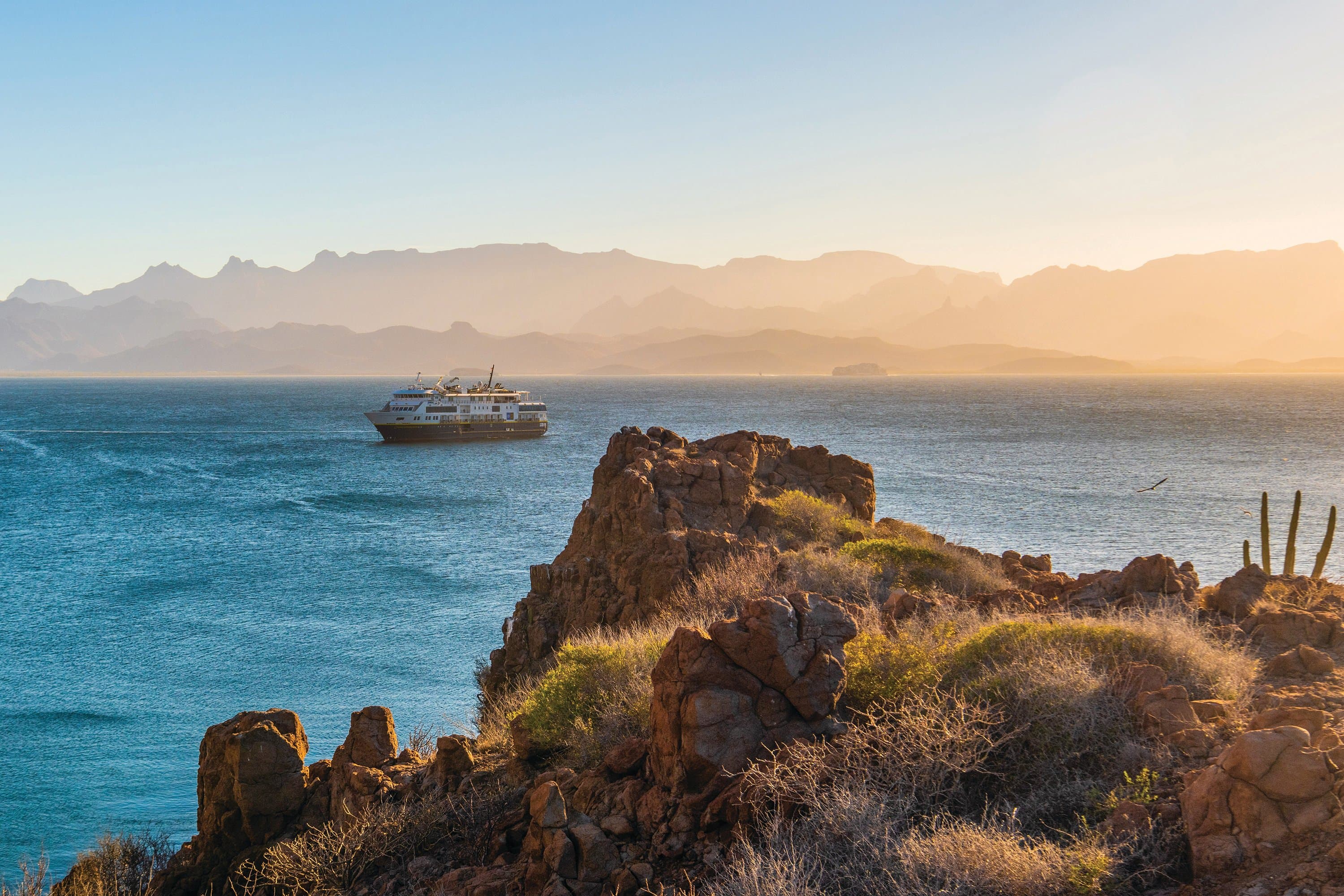
It's been 45 years since Lindblad Expeditions pioneered expedition travel in Baja California, an extraordinary marine wonderland once dubbed the "world's aquarium" by Jacques Cousteau.
Nearly half a century later, we remain one of the only small-ship expedition cruise companies bringing travelers up close to the region's abundant sea life and fascinating desert landscapes.
Away from the touristed resorts and border towns, Baja California reveals a very different world where towering Cardón cacti stand guard on pristine shores and pods of dolphins leap from the water while racing our ships.
Whether you’re hiking through arroyos that are home to unique flora and fauna, snorkeling reefs patrolled by schools of vibrant fish, or gazing at a crystal-clear, constellation-filled sky, you’ll experience each facet of this pristine land through the expert lens of National Geographic, alongside naturalists who know it best.
And with direct flights from major West Coast cities like Los Angeles, Phoenix and Dallas, you can find yourself here in just a few hours. Ahead, discover more reasons to join National Geographic-Lindblad Expeditions in this blissfully remote, yet close-to-home wilderness.
Exclusive Small-Ship Access
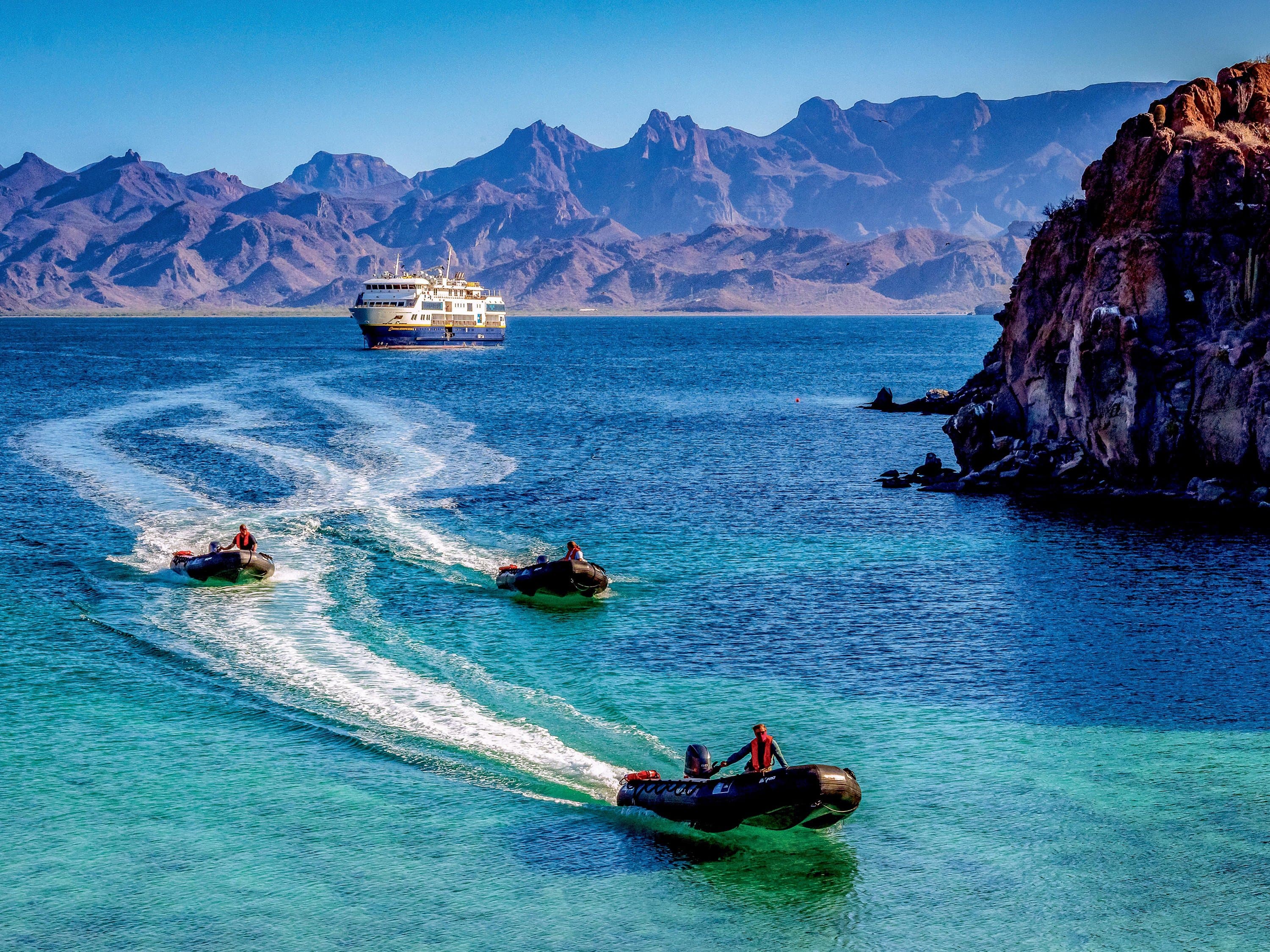
Photo: Ralph Lee Hopkins
Sail aboard small ships specially designed to explore this captivating wonderland, with shallow drafts that bring you through narrow waterways so you can get closer than you ever imagined to the spectacular marine life. National Geographic Venture is exceptionally maneuverable, able to take guests to remote beaches and idyllic coves, while sister ships, National Geographic Sea Lion and National Geographic Sea Bird are the only expedition ships in Baja California that can anchor in Magdalena Bay, allowing you to wake up among whales in one of the region’s most active whale nurseries.
Extraordinary Whale Encounters
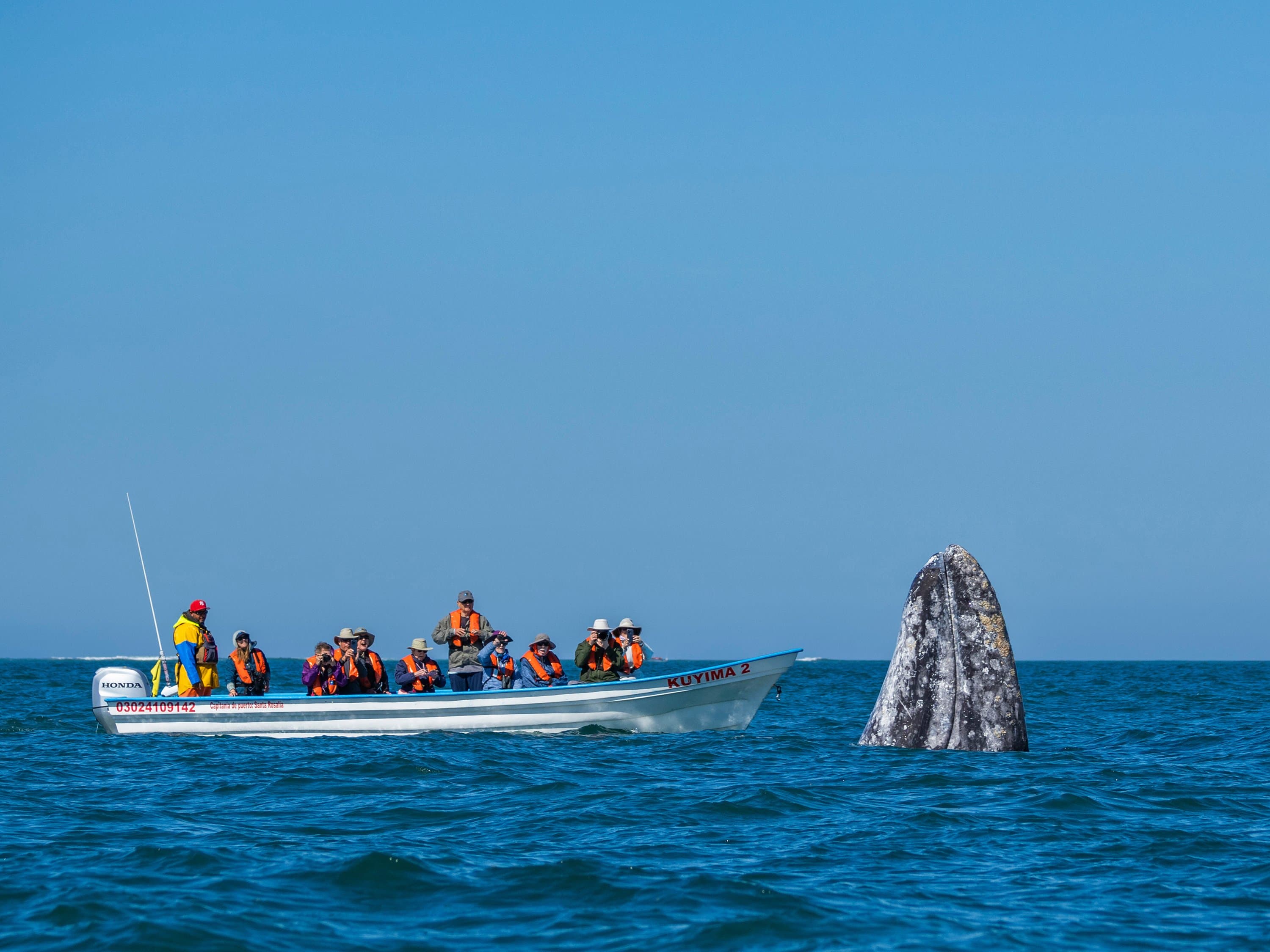
Photo: Michael S. Nolan
Each winter, Baja California hosts one of the planet’s greatest marine spectacles: thousands of gray whales migrating to sheltered waters on the western coast to give birth. Thanks to an enduring relationship with local operators, National Geographic-Lindblad Expeditions can access up-to-date insight into which lagoons are most active, helping maximize opportunities for soul-stirring encounters with the whale moms and calves.
Across the peninsula on the eastern coast, the productive waters of the Gulf of California attract an array of other whale species in reliably large numbers, including humpbacks, fin whales and majestically massive blue whales. With decades of experience in the region, our eagle-eyed naturalists and veteran captains know the best spots for whale-watching.
Hone Your Photo Skills in a Visual Paradise
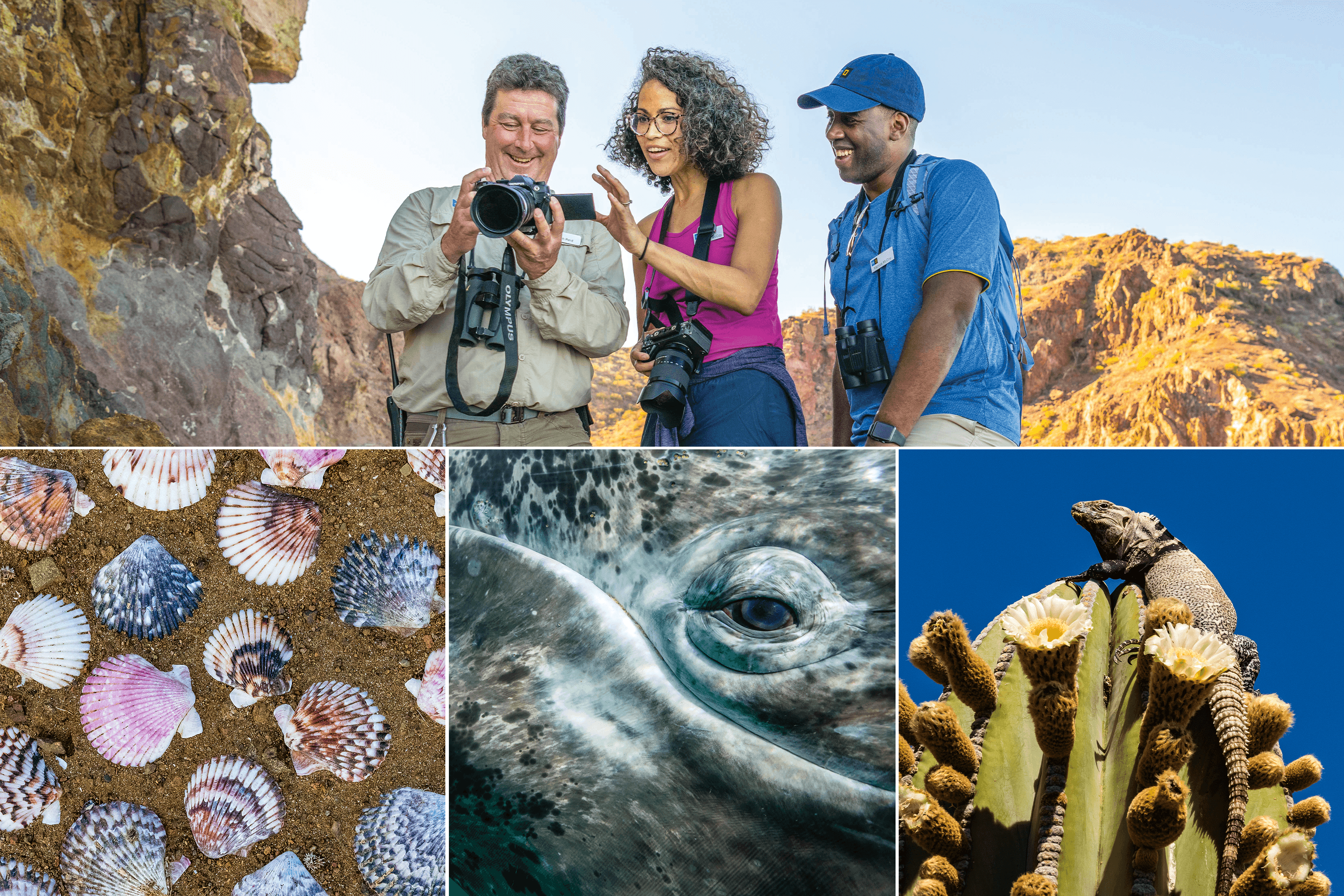
Photos: David Vargas (top row), Ralph Lee Hopkins (bottom row)
There are stunning photo opportunities around every corner in Baja California–from jaw-dropping sunsets and sunrises to colorful seashells dotting pristine beaches to whimsically shaped Boojum trees. On every voyage, you can travel alongside a certified photo instructor who will help you capture all the details, big and small, so you can return home with some of the best photos of your life.
Actively Explore Up Close
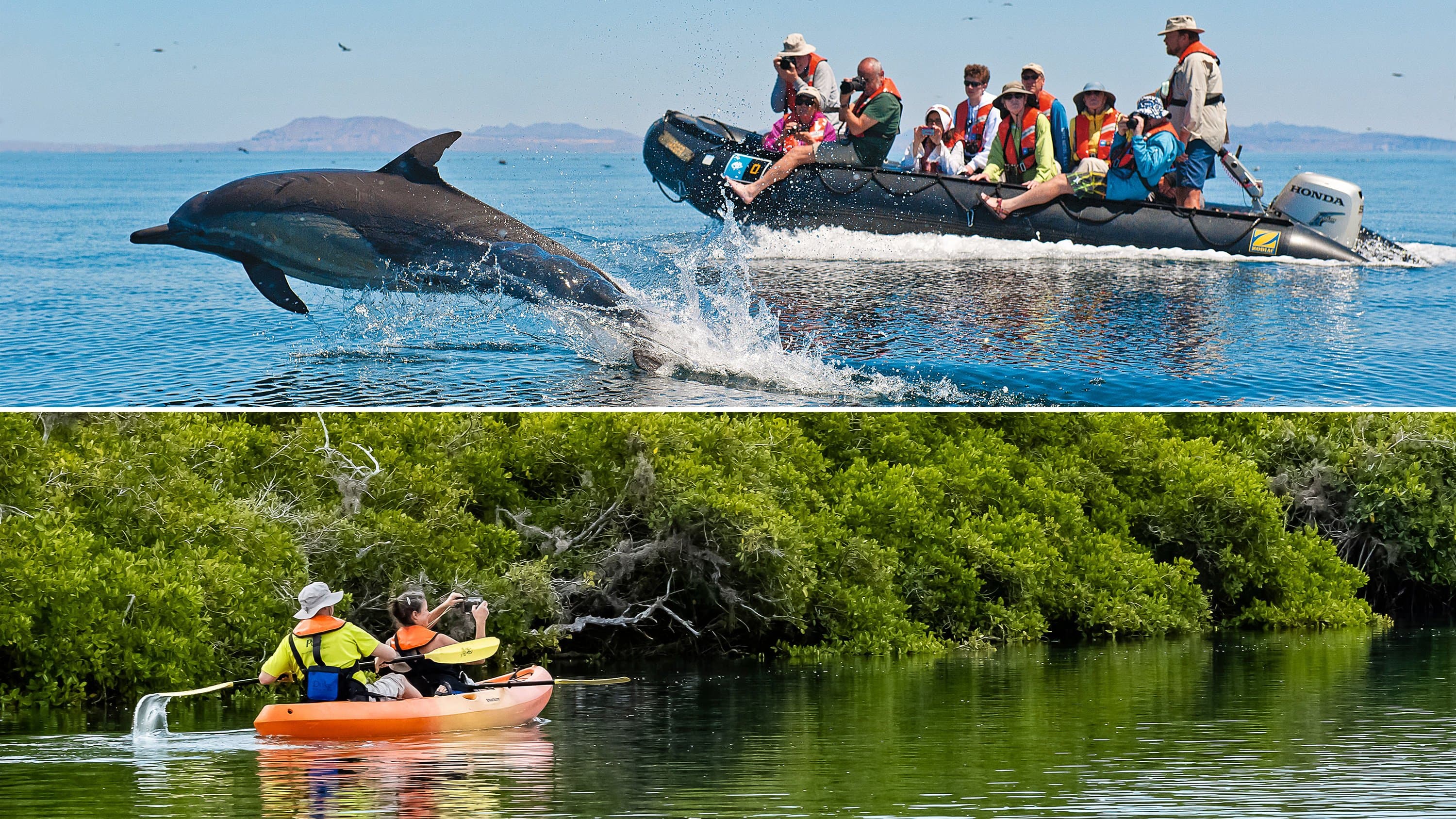
Photos: Sven Lindblad (top), Ralph Lee Hopkins (bottom)
With a suite of state-of-the-art tools aboard every National Geographic-Lindblad Expeditions ship, you’ll experience the excitement and wonder of authentic exploration in this marine paradise. Kayak through peaceful mangrove channels as seabirds soar overhead, Zodiac cruise past porpoising dolphins or leaping mobula rays, hike among towering Cardón cacti, or go for a fat-tire bike ride across windswept dunes.
An In-Depth View of the Undersea
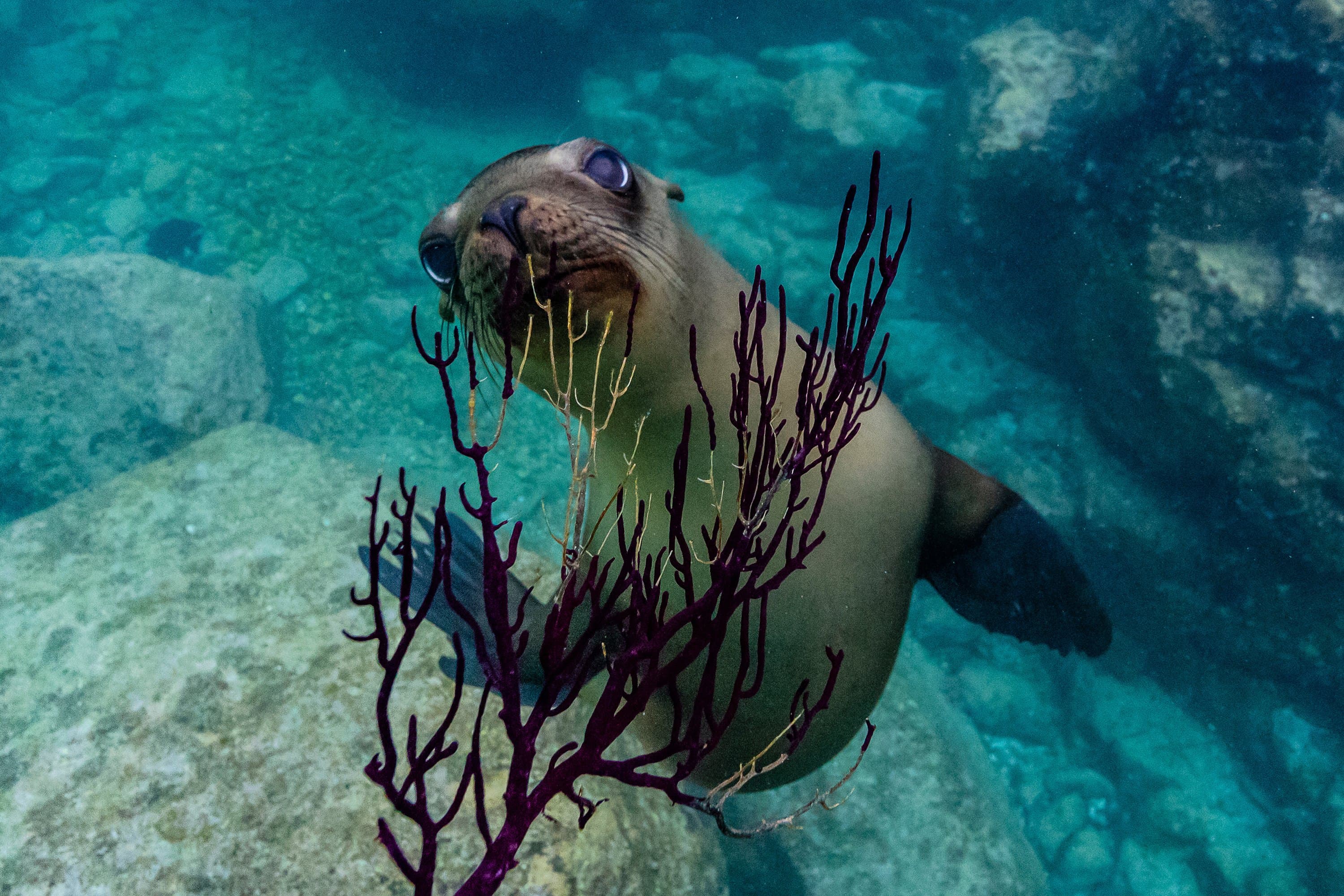
Photo: Ralph Lee Hopkins
Jump into Baja California’s sapphire seas to view its creatures up close. Snorkel with sea lions in Los Islotes, a protected colony where every rocky outcropping is seemingly covered with these playful pinnipeds and they just might swim by for a curious nibble on your flippers. Over in Cabo Pulmo National Park, one of the world’s most successful Marine Protected Areas, marvel at massive schools of jackfish alongside local guides who’ve been diving these waters for decades. Our ships are stocked with high-quality snorkel gear and wetsuits so all you have to bring is your spirit of adventure. Back on board, you’ll discover another perspective as your undersea specialist shares and interprets incredible footage taken on dives throughout your voyage.
Make Meaningful Family Memories
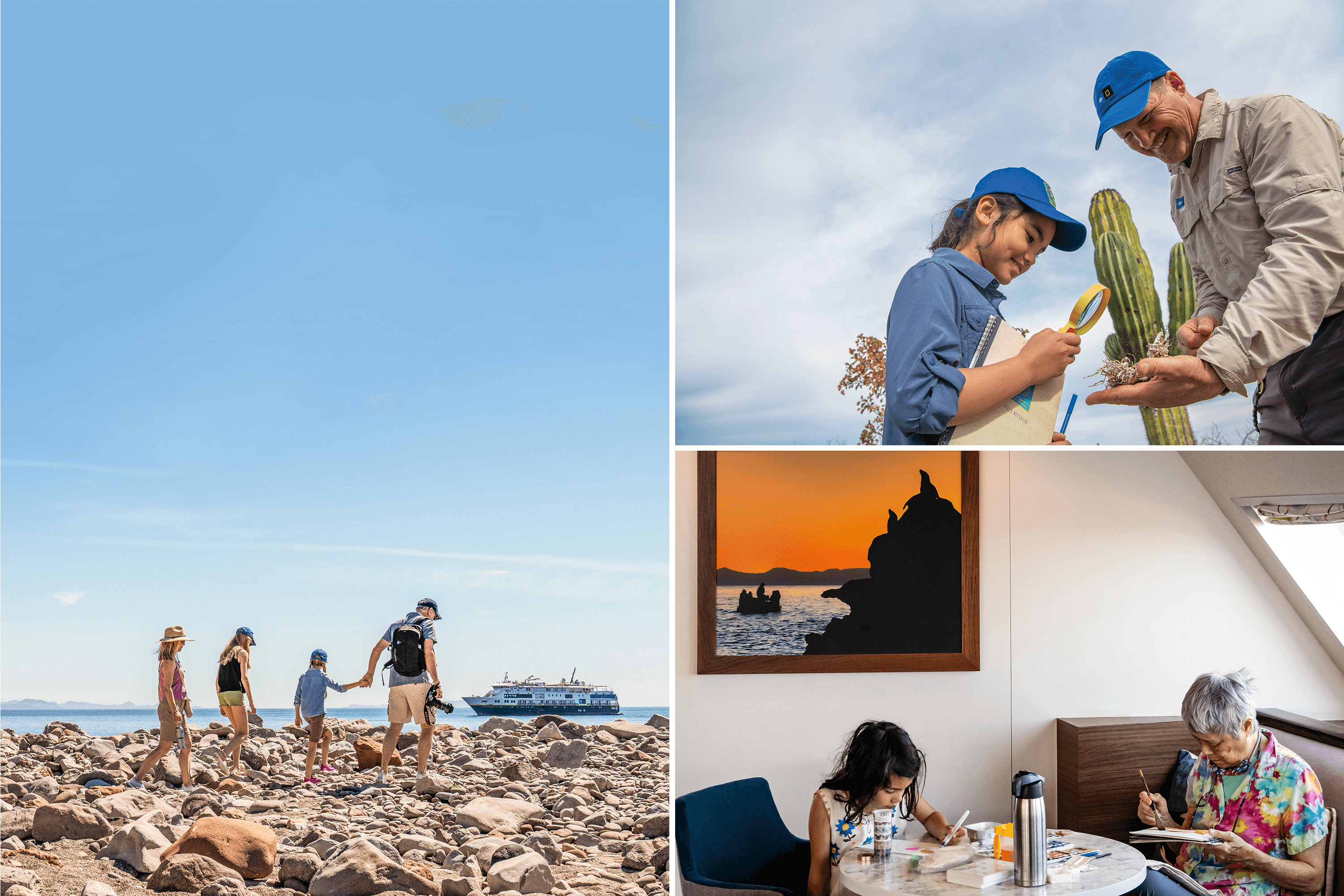
Photos: David Vargas (left and top right) Ralph Lee Hopkins (bottom right)
The extraordinary moments you’ll experience in Baja California are made extra memorable when shared together. Whether it's kayaking, birding, beachcombing or whale-watching, there’s something to inspire and delight every member of your family. And with our exclusive National Geographic Explorers-in-Training program, your school-aged kids and teens will gain a more in-depth understanding of this fascinating wilderness through a range of hands-on activities.
Encounter Local Culture on an Extension
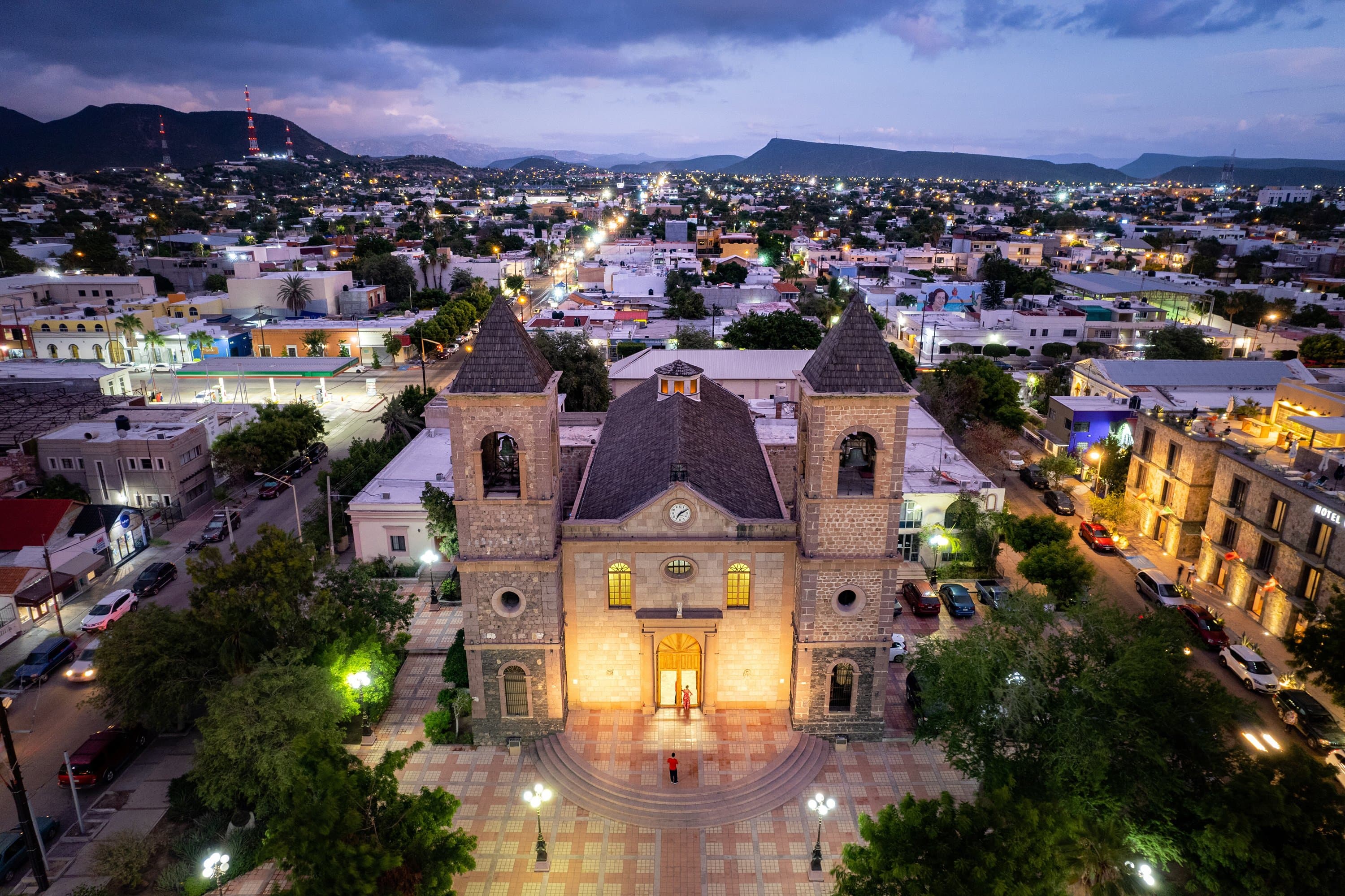
Contrast your time at sea among wild isles with a pre- or post-voyage extension that takes you into some of the vibrant coastal towns for a closer look at Baja California’s culture. In La Paz, witness the merging of old and new artistic traditions as you explore museums, galleries and street art, sample traditional dishes made in a sustainable way, and stroll the lively Malecón. While in Loreto, a guided walking tour will take you into the Jesuit-founded Mission as you learn more about the history of the building and the surrounding town.
Witness Conservation in Action
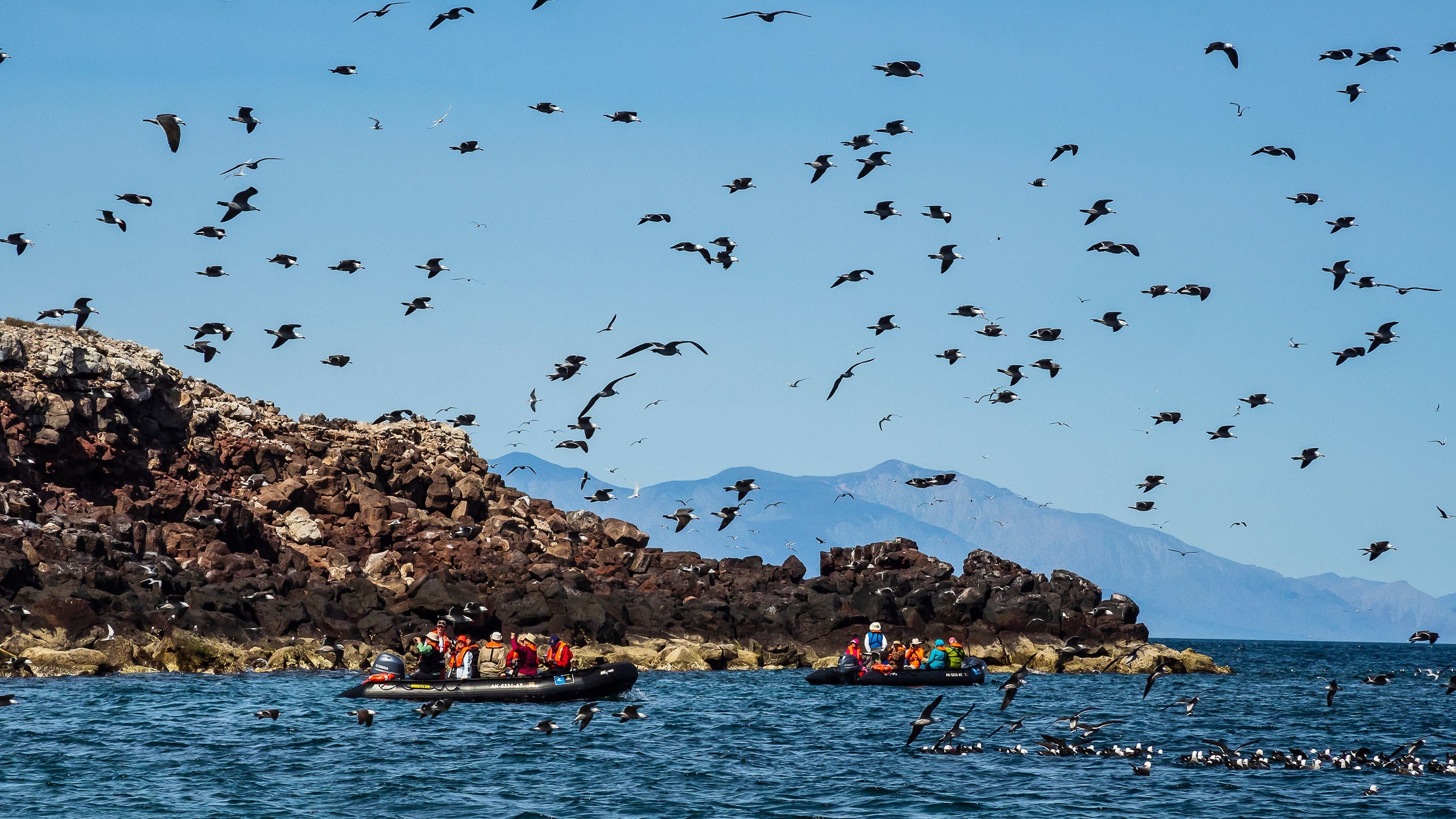
Photo: Ralph Lee Hopkins
While pioneering the very first voyages in Baja California back in the 1980s, Sven Lindblad aimed to set an example and show how travel could help protect the environment and support the local people. Decades later, we’re still committed to a conservation-minded approach that aims to safeguard this extraordinary haven for wildlife. When you travel aboard the fleet, you’re helping to contribute to critical projects like the ongoing study of endangered seabirds on Isla Rasa, where 90% of the world's Heermann's gulls come to breed.
Featured Itineraries
Related Articles
